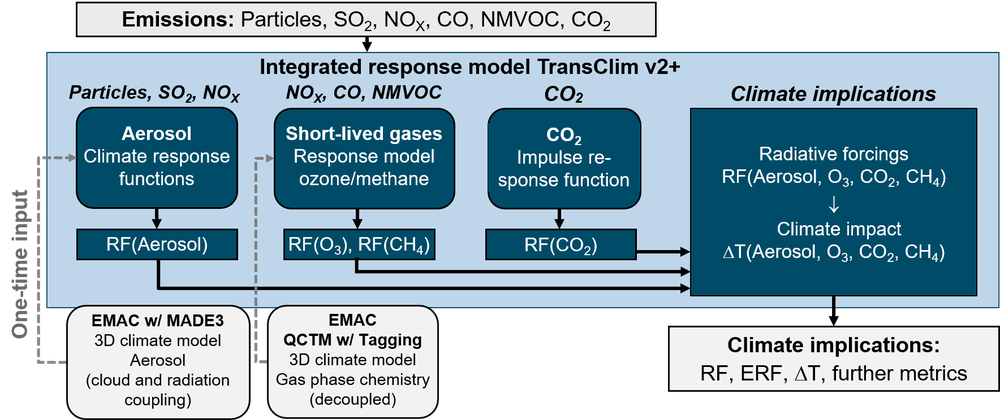TransClim

TransClim (Modelling the effect of surface Transportation on Climate) allows for rapid but comprehensive assessment of the radiative imbalance induced by land transport. To achieve this, the model makes use of hundreds of existing 3D chemistry-climate simulations with the EMAC model. Given the emission totals of both short-lived and long-lived species in one or more of the 11 considered world regions, different mitigation options can thus be compared within seconds. In addition to non-linear ozone (O3) changes [1], all other major forcing agents, that is, aerosol particles and their interactions with radiation and clouds, methane (CH4), and carbon dioxide (CO2), are now also considered within TransClim itself.
Links
[1] Rieger, V. S. and Grewe, V.: TransClim (v1.0): a chemistry–climate response model for assessing the effect of mitigation strategies for road traffic on ozone, Geosci. Model Dev., 15, 5883–5903, https://doi.org/10.5194/gmd-15-5883-2022, 2022.
Code for TransClim v1.0
Lookup table for TransClim v1.0
EMAC output for TransClim v1.0
Rieger, V. (2018). A new method to assess the climate effect of mitigation strategies for road traffic: The fast chemistry-climate response model TransClim DOI: 10.4233/uuid:cc96a7c7-1ec7-449a-84b0-2f9a342a5be5
